Cognitive Behavioral Therapy Tips That Work
Cognitive Behavioral Therapy Tips That Work
Cognitive behavioral therapy tips can offer real changes to people struggling with stress, anxiety, depression, and even day-to-day frustration. These techniques are not just for therapy sessions—they are based on well-documented research and can be applied in daily life. By using them, you learn to change unhelpful thoughts and behaviors, leading to better mental well-being over time.
Many studies have shown the success of CBT in treating both clinical disorders and everyday emotional challenges. It works by helping you recognize the patterns in your thinking and teaching you how to respond more rationally and positively. Let’s explore some of the most practical and effective CBT techniques that work—and can be used by anyone, whether you’re working with a therapist or on your own.
Understand the Thought-Feeling-Behavior Cycle
Cognitive behavioral therapy is built on a clear model: your thoughts create feelings, which then influence your behaviors. This cycle works both ways—if your thinking is negative, your emotions and actions often follow. Understanding this loop gives you a powerful way to interrupt and change it.
For example, imagine thinking, “Nobody likes me.” That thought may cause sadness, which leads to isolating behavior. Over time, isolation reinforces the belief. CBT helps you stop the cycle by stepping back, questioning that belief, and replacing it with a more balanced view, such as, “Some people might not connect with me, but others do.”
This foundation is key to many other techniques. Once you understand this cycle, you can apply targeted tools to improve how you think, feel, and act in tough situations.
Start with Thought Records
A thought record is a structured way to deal with overwhelming or negative thoughts. It helps you pause, reflect, and respond instead of react. Here’s how it works:
Identify the triggering event.
Write down the automatic thought that popped up.
Name the emotion you felt.
Examine the evidence for and against that thought.
Replace the original thought with a more realistic one.
These steps may seem simple, but numerous psychological studies confirm their impact. For example, a randomized controlled trial found that patients using thought records during CBT experienced a noticeable drop in anxiety symptoms within six weeks.
By turning your thoughts into something visible, you can analyze them better. Over time, this leads to more rational responses and a sense of control.
Behavioral Activation: Action Before Emotion
People struggling with low motivation or depression often wait to "feel better" before taking action. Unfortunately, waiting rarely helps. CBT uses a technique called behavioral activation, where you deliberately plan and do activities, even small ones, before the desire returns.
This can include everyday actions like:
Taking a walk outdoors
Cooking a basic meal
Calling a friend
Cleaning your workspace
The key is consistency. These small wins create a sense of accomplishment, and that fuels a better mood over time. Research in the Journal of Consulting and Clinical Psychology supports this, showing that behavioral activation on its own can be just as effective as antidepressant medication for some people.
Challenge Cognitive Distortions One by One
Cognitive distortions are exaggerated or inaccurate thought patterns. They're extremely common but often go unnoticed. Some common types include:
All-or-nothing thinking: “If I can’t do it perfectly, I shouldn’t bother.”
Overgeneralization: “This always happens to me.”
Emotional reasoning: “I feel scared, so something must be wrong.”
One of the strongest parts of CBT is learning to spot these patterns and call them out. You begin to see that your mind is not always telling you the truth. Challenging these thoughts helps break the mental habits that lead to stress and hopelessness.
The more you do this, the more your mind naturally shifts toward balanced, rational thinking. Studies suggest that even self-guided CBT that focuses on distortion recognition can reduce anxiety and improve mood over a short period.
Try the “What If?” Strategy for Anxiety
Anxiety is often future-focused. You may find yourself overwhelmed by endless “what if” scenarios. CBT suggests not avoiding these questions, but facing them directly, with logic and perspective.
When a “what if” thought arises, write it down. Then answer it honestly. For example:
What if I say something stupid during the meeting? → “It might feel awkward, but most people probably won’t notice.”
This process makes fears seem less powerful. It also gives you a clearer, calmer way to approach future situations. In a clinical setting, this method has been shown to reduce overthinking and improve decision-making in people with social anxiety and general worry.
Exposure Isn’t Avoidance—It’s Healing
Avoidance can temporarily reduce fear, but it makes anxiety stronger in the long run. CBT uses exposure to gently face fears in a controlled way. This might start with imagining the situation and gradually moving toward real-life experiences.
Here’s an example process:
Think about speaking in public.
Visualize it in detail.
Practice saying a few lines alone.
Speak in front of a trusted friend.
Then try it in a small group.
Each step reduces your brain’s fear response. Research published in Behaviour Research and Therapy confirms that repeated exposure lowers fear and builds confidence, often more than avoidance ever could.
Track Progress Through a Thought Journal
A thought journal is a tool to track your mental patterns and measure progress. It doesn’t need to be complicated. Start by noting:
One negative thought per day
The replacement thought you tried.
A positive action or outcome from the day
Even this short daily habit trains your mind to think in a more structured, balanced way. Research from the Cognitive Therapy and Research Journal reports that consistent journaling supports long-term gains, especially when paired with therapy or self-help work.
You’ll start noticing which thoughts are most common, which tools help most, and how far you’ve come.
Accept That Progress Can Be Uneven
Real change doesn’t happen in a straight line. With CBT, some days you’ll feel on top of things, and other days, like you’ve forgotten everything. That’s okay. The goal is not perfection but persistence.
Mental health experts agree: it’s better to show up consistently, even with small efforts, than to aim for quick fixes. If you miss a day of journaling or forget to challenge a thought, don’t let it undo your progress. Reflect, reset, and keep going.
This mindset—of compassion combined with structure—is what makes CBT sustainable. A meta-analysis from Clinical Psychology Review emphasized that clients who accept temporary setbacks tend to have the best long-term results.
Professional Support Makes a Difference
While many people benefit from cognitive behavioral therapy tips on their own, sometimes expert guidance is needed. A licensed CBT therapist can provide personalized strategies and help you stay on track.
This is especially helpful if:
You’re stuck in a repetitive thought loop
You feel overwhelmed applying techniques alone.
Your symptoms are interfering with daily life.
Research from the American Psychological Association shows that CBT with therapist involvement can lead to faster improvements and more sustained changes. Even short-term therapy (6–12 sessions) can create a lasting impact.
FAQs
1. What is the core idea behind CBT techniques?
CBT focuses on changing unhelpful thinking patterns to improve emotions and behaviors. It’s based on the idea that thoughts, feelings, and actions are connected.
2. Can I apply these techniques without a therapist?
Yes, many CBT strategies are easy to use on your own, especially tools like journaling and thought records.
3. How long does it take to see results?
Some people notice improvements in a few weeks, but consistent practice over months leads to more lasting change.
4. Are these methods effective for anxiety?
Yes, research shows CBT methods are highly effective in managing anxiety and reducing overthinking.
5. Is writing down thoughts really that helpful?
Yes, studies show that writing helps identify patterns and supports clearer, more rational thinking.
Conclusion
Cognitive behavioral therapy tips offer a practical, research-supported way to improve your thinking, mood, and behavior. By using thought records, behavioral activation, exposure, journaling, and other proven strategies, you can start creating real changes in your mental health. These tools don’t require perfection—only willingness and consistency. Whether you’re applying them alone or with a therapist’s help, the path toward better mental clarity and emotional stability starts with these small, steady steps.
Cognitive behavioral therapy tips aren’t about quick fixes—they’re about proven habits that help you think and live better, one day at a time.
